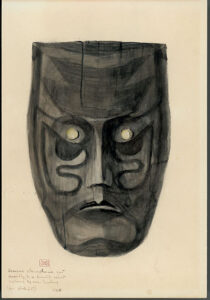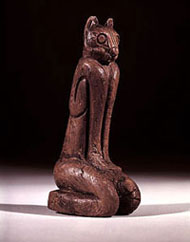The Story of Marco Island, Part 1: The Ancient Island – Life Before Time
As part of our love for Marco Island at The Marco Review, we think there’s nothing more exciting than sliding through time and learning about this island’s past, present, and potential future. This is the first part of a series of blog posts where we’ll explore the different events, discoveries, cultures, and developments that have formed Marco Island into what it is today.
Long before Marco Island became our favorite destination for its beautiful beaches and shells, breathtaking nature, vibrant local scene, and unforgettable sunsets, it was home to one of Florida’s most fascinating and mysterious peoples: the Calusa.
The Calusa – The Island’s First Guardians
Long before Marco Island became beloved for its beautiful beaches, shells, breathtaking nature, vibrant local scene, and unforgettable sunsets, it was home to one of Florida’s most fascinating and mysterious peoples: the Calusa.

Watercolor of mask excavated at Key Marco.
The name Calusa is believed to mean “fierce people” a fitting title for a society that dominated Southwest Florida’s coast for over a thousand years. Described by early Spanish explorers as powerful and war-like, they ruled a vast estuarine domain, with warriors often portrayed as tall, imposing figures covered in body paint. Living along the coast and inner waterways, the Calusa built homes on stilts, topped with woven palmetto-leaf roofs—but notably, without walls. This unique architectural style allowed them to live integrally with the aquatic landscape.
Masters of the Sea: Not Farmers, But Fisherfolk
Unlike many contemporary tribes, the Calusa did not practice agriculture. Instead, they thrived on fishing, hunting, and gathering—crafting nets from palm‑fiber, using spears to catch eels and turtles, and fashioning fish‑bone arrowheads for deer hunting. Women and children gathered shellfish like conchs, crabs, clams, lobsters, and oysters.
Known as the “Shell Indians,” the Calusa elevated discarded shells into tools, utensils, jewelry, ornaments, and the very foundations of shell mounds—impressive engineering feats that still mark the landscape today.
At their height, the Calusa formed a sophisticated chiefdom, controlling vast territories from Charlotte Harbor to the Keys. They commanded tribute from other tribes, supported specialized roles like priests, artisans, and warriors, and were anchored by a central capital—possibly on Mound Key.
The Calusa Vanish, and What They Left Behind
Despite their centuries-long dominance of Florida’s southwest coast, the Calusa ultimately vanished in the 18th century. Their decline was mainly due to:
- European contact, which brought devastating diseases and conflict.
- Slave raids and warfare with groups such as the Lower Creeks (Muscogulges), forcing survivors toward the Keys or into Spanish settlements like Cuba.
- By the mid‑1700s, the remaining Calusa had either died, been captured, or were absorbed into other communities.
A Century Later: Rediscovering the Calusa
Enter 1896, when anthropologist Frank Hamilton Cushing led the landmark Pepper–Hearst Expedition at Key Marco, just off modern-day Marco Island. It was a watershed moment in American archaeology:
- The team excavated the small pond known as the “Court of the Pile Dwellers”, uncovering over 1,000 wooden artifacts—a rare trove of pre-Columbian organic remains.
- Artifacts included masks, figureheads (like deer, turtle, alligator), tools, nets, carved plaques, and notably, the Key Marco Cat—a mesmerizing half-feline, half-human figurine, just six inches tall.
- The Key Marco Cat, carved from dense native hardwood (possibly buttonwood), stands out for its artistic mastery. Cushing described it as:
“man‑like being in the guise of a panther… its dignity of pose may fairly be termed ‘heroic’… its conventional lines are to the last degree masterly.” - Preservation was exceptional due to the artifact’s burial in oxygen-free muck, which kept wood, pigments, and fibers intact—even though many items began to disintegrate upon exposure. Fortunately, field artist Wells M. Sawyer recorded vivid watercolors and photographs as each piece surfaced.
Today, the Key Marco Cat is being exhibited at the Marco Island Historical Museum—part of a special long-term loan from the Smithsonian and other institutions. The exhibit runs through 2026, marking a triumphant return of these artifacts to their place of origin and serving as a bridge across time.

Key Marco Cat on display at the National Museum of Natural History
—
Coming Up Next in the Series
In Part 2, we’ll explore Marco Island’s next chapter: the arrival of Spanish explorers. We’ll uncover how first contact with Europeans reshaped life on the island forever, setting the stage for new conflicts, cultures, and transformations.





